Comprehensive Guide to Aluminum Casting Surface Finishing Techniques
Aluminum casting is widely used in various industries due to its lightweight, durability, and excellent corrosion resistance. However, to enhance its functionality, appearance, and longevity, aluminum castings often undergo a variety of surface finishing processes. These techniques not only improve the aesthetics of the product but also provide added protection against wear and environmental factors. Below, we explore some of the most common aluminum casting surface finishing processes, including deburring and grinding, shot blasting, mirror polishing, powder coating, electrophoretic coating, anodizing, tin plating, and nickel plating.
1. Deburring and Grinding
Deburring and grinding are essential initial processes in aluminum casting finishing. During manufacturing, castings often develop excess material such as burrs or sharp edges. Deburring removes these imperfections for a smoother surface, while grinding further refines the texture.
Purpose: Improves safety by eliminating sharp edges, enhances dimensional accuracy, and prepares the surface for subsequent treatments.
Applications: Commonly used in automotive, aerospace, and industrial components where precision is critical.
2. Shot Blasting
Shot blasting is a cleaning and surface preparation technique that involves propelling abrasive materials (such as steel shots or sand) at high speeds onto the aluminum surface.
Purpose: Removes rust, scale, and other contaminants while creating a uniform matte texture. It also enhances surface adhesion for coatings or paints.
Applications: Ideal for aluminum castings used in construction, machinery, and decorative applications.
3. Mirror Polishing
Mirror polishing is a high-precision finishing process that gives aluminum castings a reflective, mirror-like appearance. This is achieved through mechanical buffing and polishing using fine abrasives.
Purpose: Enhances the aesthetic appeal of aluminum surfaces and reduces friction in certain applications.
Applications: Widely used in decorative items, automotive parts, and consumer electronics.
4. Powder Coating
Powder coating is a popular finishing method where a dry powder (made of pigments and resins) is electrostatically applied to the aluminum surface and then cured under heat to form a durable layer.
Purpose: Provides excellent resistance to scratches, corrosion, and fading while offering a variety of colors and textures.
Applications: Common in outdoor furniture, automotive parts, and architectural components.
5. Electrophoretic Coating (E-coating)
Electrophoretic coating is an advanced finishing process that uses an electric current to deposit a thin layer of paint or resin onto the aluminum casting.
Purpose: Ensures uniform coverage on complex geometries while providing superior corrosion resistance.
Applications: Frequently used in automotive industries for chassis components and other parts requiring high durability.
6. Anodizing
Anodizing is an electrochemical process that increases the natural oxide layer on the aluminum surface. This layer acts as a protective barrier against corrosion and wear.
Purpose: Enhances corrosion resistance, improves surface hardness, and allows for dyeing in various colors for decorative purposes.
Applications: Common in aerospace components, consumer electronics (e.g., smartphone cases), and architectural elements.
7. Tin Plating
Tin plating involves applying a thin layer of tin onto the aluminum surface through electroplating or chemical deposition methods.
Purpose: Protects against oxidation and corrosion while offering excellent solderability for electrical applications.
Applications: Frequently used in the electronics industry for connectors, switches, and other components requiring electrical conductivity.
8. Nickel Plating
Nickel plating is another electroplating process that deposits a layer of nickel onto aluminum castings for added durability and aesthetic appeal.
Purpose: Provides excellent resistance to corrosion and wear while enhancing the appearance with a lustrous finish. It also improves hardness and conductivity.
Applications: Used in automotive trim parts, industrial machinery components, and decorative hardware.
Final Thoughts on Aluminum Casting Surface Finishing
When it comes to Low Pressure Die Casting, *Dongrun Casting Industry Co., Ltd.* stands out as a trusted partner for delivering high-quality aluminum castings. With years of experience in **metal casting**, Dongrun combines advanced technology with rigorous quality control to ensure superior results at every stage of production.
The choice of surface finishing technique depends on the specific requirements of the application—whether it's aesthetic enhancement, increased durability, or improved functionality. Combining multiple finishing processes can also yield superior results tailored to your needs.
At Dongrun Casting, we specialize in providing high-quality aluminum casting services with a wide range of finishing options to meet your exact specifications. Whether you need precision deburring and grinding or advanced techniques like anodizing or powder coating, our team ensures exceptional results every time.
By incorporating these finishing techniques into your aluminum casting projects, you can achieve optimal performance and aesthetics while extending the lifespan of your products.
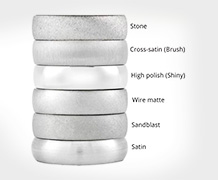 |  | 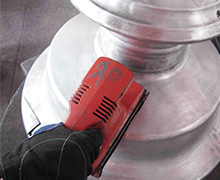 |  | 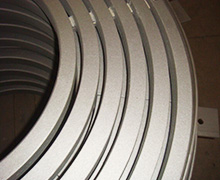 |  | 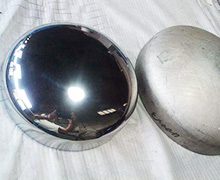 |
| Surface finished | Removing Burrs | Shot Blasting | Mirror Polishing | |||
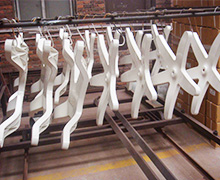 |  | 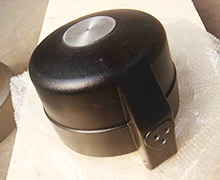 |  | 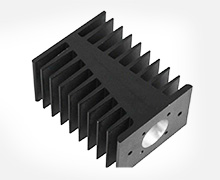 |  | 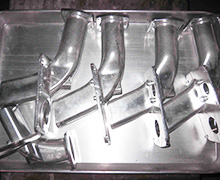 |
| Powder Coating | Electrophoretic Coating | Black Anodizing | Tumbling | |||
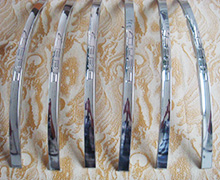 |  | 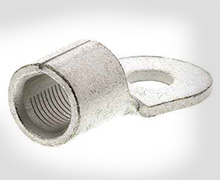 |  | 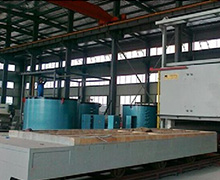 |  | 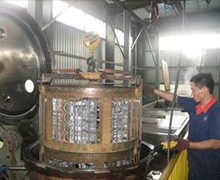 |
| Nickel Plated | Tin Plated | Heat Treatment | Vacuum Impregnation | |||
 | ||||||
| Leaking Test | ||||||